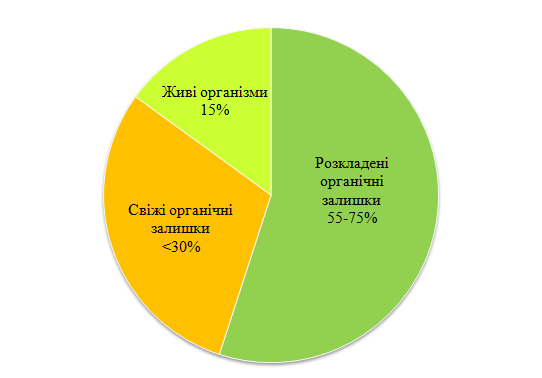Soil fertility
Definition
- Study of the ability of the soil to provide plants with essential mineral nutrients, the mechanism by which nutrients are received, and the factors influencing the supply of nutrients to plants.
- The natural ability of the soil to provide plants with nutrients.
Soil fertility cannot be controlled, only plant nutrients can be controlled, which in turn affect soil fertility.
DYNAMICS OF THE SOIL – PLANT SYSTEM
If M is the nutrient, its movement can be described as follows:
M (solid phase) → M (solution) → M (plant root) → M (plant)
Factors that affect the conversion of unavailable nutrients into available and vice versa are:
- Chemical activity in an inaccessible form of a nutrient
- Chemical activity of any substitute ions at the reaction point
- The number of available ions in solution
- Microbial activity
- Factors affecting the transfer of available ions to the root surface
In turn, microbial activity is affected by moisture, aeration, nutrient uptake, soil temperature and pH. The transfer of available ions to the root surface is affected by the possibility of replacement and the number of exchangeable ions, as well as the concentration gradient of dissolved ions.
NUTRITIONAL MOBILITY
Definition
The ability of a nutrient ion to move through the soil by one or more mechanisms.
Nitrate ion is the most mobile in the soil due to its high solubility in water and very limited reaction with soil compounds. The mobility of sulfate ion is almost the same as that of nitrate ion, but is limited in soils with high anion exchange capacity. Metabolic cations are retained by clay and organic matter, but are in equilibrium with the soil solution.
The release rate depends on:
- type of exchange and concentration
- substitutability of exchange cations
- rate of removal from the soil solution
MAIN FACTORS AFFECTING FERTILITY
There are six main factors that affect the assessment of soil fertility:
- Substances iThe level of organic matter in the soil
- Biological activity
- Tillage
- No or minimal erosion
- The correct pH of the soil
- Nutrient balance
WHY IS ORGANIC SUBSTANCE IMPORTANT?
Soil fertility is significantly affected by soil organic matter. Organic matter is the part of the soil that is formed from decomposing plants and animals. For example, when you plow a field, leaves and roots become part of the organic matter of the soil. In soil, organic matter consists of several different fractions, including living organisms, fresh and decomposed organic residues.
LIVING ORGANISMS
Living organisms make up about 15% of soil organic matter. The living part of the soil includes earthworms, insects, bacteria, fungi, plant roots and animals such as voles and moles. These organisms help to break down newly added plant residues, manure and other organic matter.
In the process of decomposition, organisms receive energy and nutrients, and release nutrients available to plants. This process of releasing nutrients is called mineralization. Organisms also play an important role in soil aggregation and disease control.
COMPOSITION OF SOIL ORGANIC SUBSTANCE

<30% Fresh organic residues
55-75% Decomposed organic residues
FERTILITY FACTOR I
Maintaining the level of soil organic matter
It is very important to maintain a sufficient level of organic matter in the soil. For some farms, this can be a hard task and requires a diversified approach. In essence, the level of organic matter can be maintained by adding various types of organic matter, while reducing the loss of organic matter from the system. On dairy farms, the main source of organic matter is manure. Other sources of organic matter may be cover crops and plant residues. Crop rotations, which include perennial grass crops, reducing aggressive and continuous tillage, will help reduce organic matter losses.
Article about organic matter: Organic matter of the soil – a factor that determines its fertility
FERTILITY FACTOR ІІ
Maintenance of soil biological activity
The second factor in soil fertility is the maintenance of soil biodiversity. The soil food web consists of many organisms that have different sizes, but their survival depends largely on each other. Biologically diverse soil can number up to 100,000 different types of living organisms.
Read about soil microbes here: Soil Health – Soil Microbes, Organic Substances and Nutrient Recycling
By-products formed from roots and fresh organic residues feed soil organisms. In turn, soil organisms support plant health by decomposing organic matter, participating in the nutrient cycle, decomposing pollutants, improving soil structure, and controlling crop pests. For example, for other soil organisms, earthworms break down large pieces of plant debris into smaller ones. Earthworms also bury themselves in the soil, providing many airways for root growth. Finally, earthworms secrete a muzzle, which helps the soil to bind.
FERTILITY FACTOR ІІІ
Tillage
The next principle of fertility is the management of tillage. It is believed that soils in good physical condition – porous soils, which are easily penetrated by water and roots. Porous space is created by aggregate soil. Soil aggregates are formed when soil particles (sand, silt, clay) stick together with organic matter, soil organisms and plant roots. The glue that holds it all together is formed from plant roots and soil microorganisms.
Soil aggregates come in different shapes, sizes and levels of stability. Their location in the soil ecosystem forms the soil structure. The space between the soil units provides space for air and water. Therefore, such soils have fewer problems with erosion and leaching, and nutrients become more readily available to plant roots.
FERTILITY FACTOR ІV
Prevent soil erosion
One of the factors of soil fertility is the reduction of nutrient losses to the environment. Erosion is the main mechanism by which valuable topsoil is lost from agricultural fields. Reducing erosion is maintaining the soil in a state that will withstand the effects of rain and wind.
There are many ways that can be used to combat erosion. First, keep the soil as covered as possible with plant material. For example, erosion is greater in a field with row crops than with perennial grasses. In the row crop system, cover crops can be grown to protect the soil from erosion during the autumn and winter months.
Second, reduced tillage also reduces erosion. Plant residues, after minimal tillage, protect the field from erosion.
Legumes, like this red clover, are an important part of crop rotation

FERTILITY FACTOR V
Soil acidity
Neutral soil has a pH of 6.5 – 7.3. Acidic soil with pH <6.5. Alkaline soil has a pH> 7.3. Soil acidity greatly affects the availability of nutrients. Most crops do well on soils with a pH between 6.0 and 6.8. Legumes are sensitive to acidity, and will feel bad at pH <6.0.
This is due to the fact that legumes form a symbiosis with a special type of bacteria. Bacteria have the ability to fix atmospheric nitrogen, and convert it into nitrogen available to plants. In order for these bacteria to survive, they need a soil pH above 6.0. Molybdenum, which is needed to fix nitrogen in legumes, is available in more alkaline soils.
FERTILITY FACTOR VІ
Nutrient balance
The last factor in soil fertility is to balance the nutrients needed by plants, while reducing their impact on the environment. There must be a balance between how much nutrients the plants need and how much fertilizer is applied to the soil.
MAIN ISSUES REGARDING SOIL FERTILITY
- How fertile is the soil?
- How to increase soil fertility?
- How much nutrients are in the soil?How much fertilizer should be applied so as not to overfeed the soil and get the planned harvest?
In order to answer these questions it is necessary to conduct agrochemical field research.
STEPS TO INCREASE FERTILITY
Five key steps to a successful soil fertility program:
- Selection of a representative soil sample for analysis: for standard farming, use the envelope method;
- Proper care of the sample: Do not contaminate the sample. Send the soil for analysis as soon as possible;
- Chemical analysis in the laboratory: reliable test results are available because the procedures are standardized and regulated by the state.
- Competent interpretation of the results of agrochemical analysis of the laboratory
- Development of recommendations: based on a study of land in your area and for crops grown.
Write to us
and we will find an opportunity
for cooperation


